A controversial headline this but it’s a subject we recently discussed on the podcast (you can listen here) and I thought it was worth a follow up. Those of you on instagram may have noticed more and more AI generated designs creeping into your feed. Those of you who linger and pay attention to comments may have noticed a certain anger in the comments below. Accusations of cheating, of feeling conned leading, perhaps, to increased feelings of anxiety that social media is promoting yet another unattainable goal.
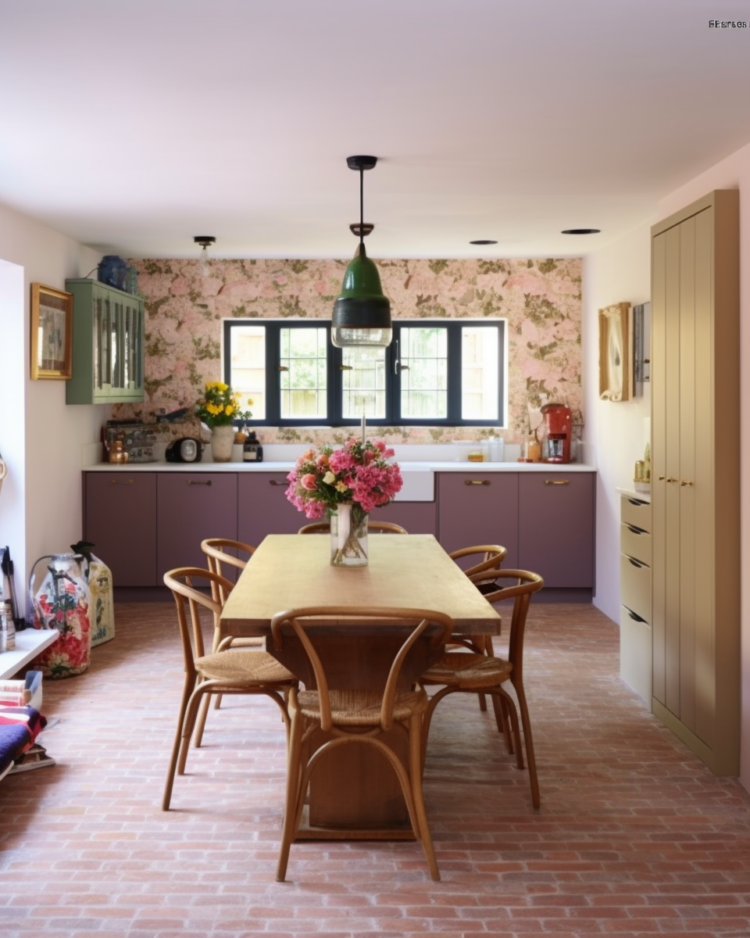
Not only can we not have the bodies and faces that we are shown but now we can’t live in the spaces either.
But is that an overreaction? Is AI actually a valuable design tool? Can it help us make decisions, visualise spaces? Can it push us into being more daring with our colour choices and show us layouts we might not have thought of? Will AI, and as a writer who fears the rise of ChatGPT, replace designers?
The image above is a blend of the two photos below as an example of AI assisted design and I’ll explain how it came about later in the post.
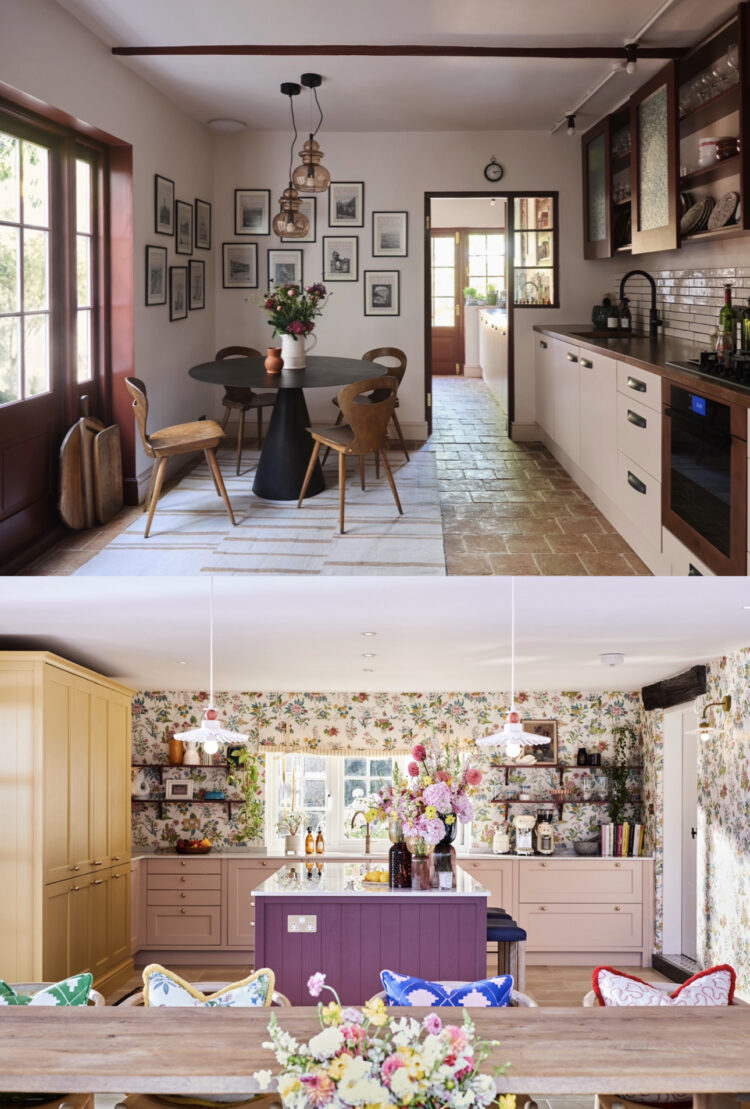
These are all valid questions and fears and I’d love to hear your thoughts. The first, and perhaps clearest point to be made came from Juan Sandiego, of Happy Home Clinic, who has written about using AI and who made the point that all AI designs should be declared at the top of the post in the same way the rules state that AD should be announced. That way you know from the start if you are looking at something real or imagined. Is it information you can use? Or inspiration you can take if you like and not if you don’t?
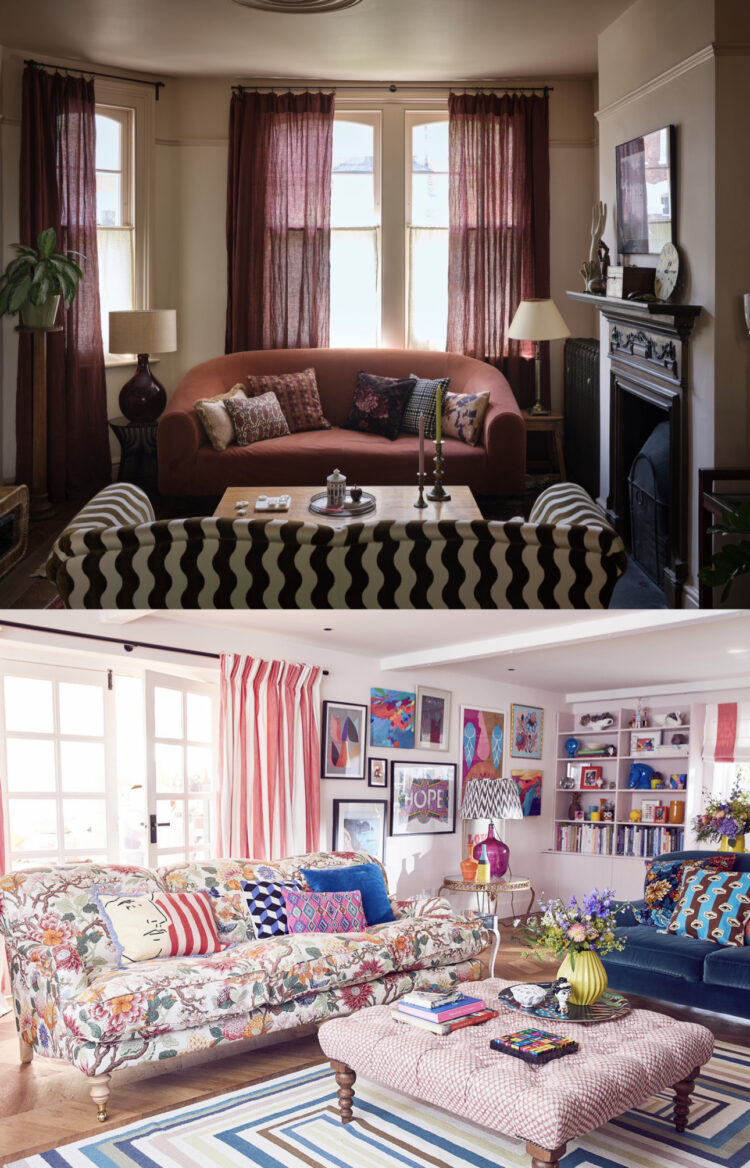
Currently, the most common tool seems to be MidJourney, which is no longer free as so many people wanted to use it. It works on prompts and the better you are at giving the prompt the better the result will be. In his post on using Midjourney, Juan gives a really detailed breakdown on the sorts of words to use for a good result.
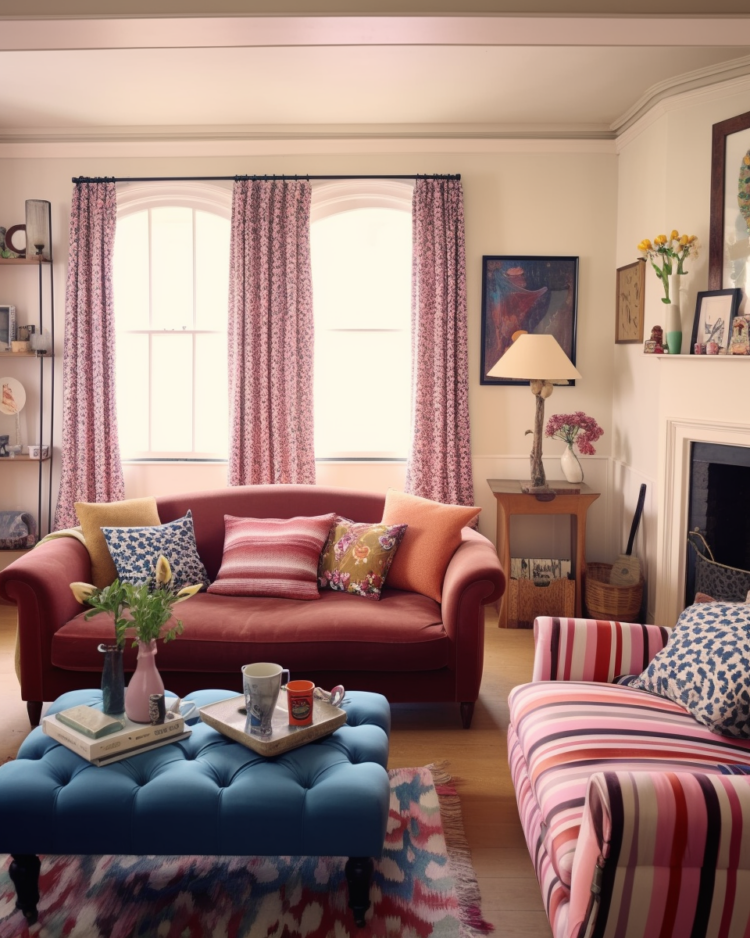
What I notice from Juan’s AI designs is that he often asks for a soft, diffuse morning light. That’s the flattering one. Trinny Woodall (an early podcast guest) said she always buys houses with east-facing bathrooms as that’s the most flattering to the skin. If you have a zoom meeting she suggests trying to face that direction too.
Do read Juan’s post, but he suggests you need to consider some of the following factors when creating a successful AI design: Medium – do you want a render, a sketch or a photo? You must specify the style you are looking for as well as the lighting – morning, golden hour, artificial or moody. Do you want the colour to be warm, cool or even Kodak. Should the mood be serene, cosy or elegant. And you can also specify the composition – bird’s eye, eye level, close up or aerial.
So you can see there’s more to creating a successful image than you might at first imagine. I think it might be like backgammon – anyone can play, only a few become masters.
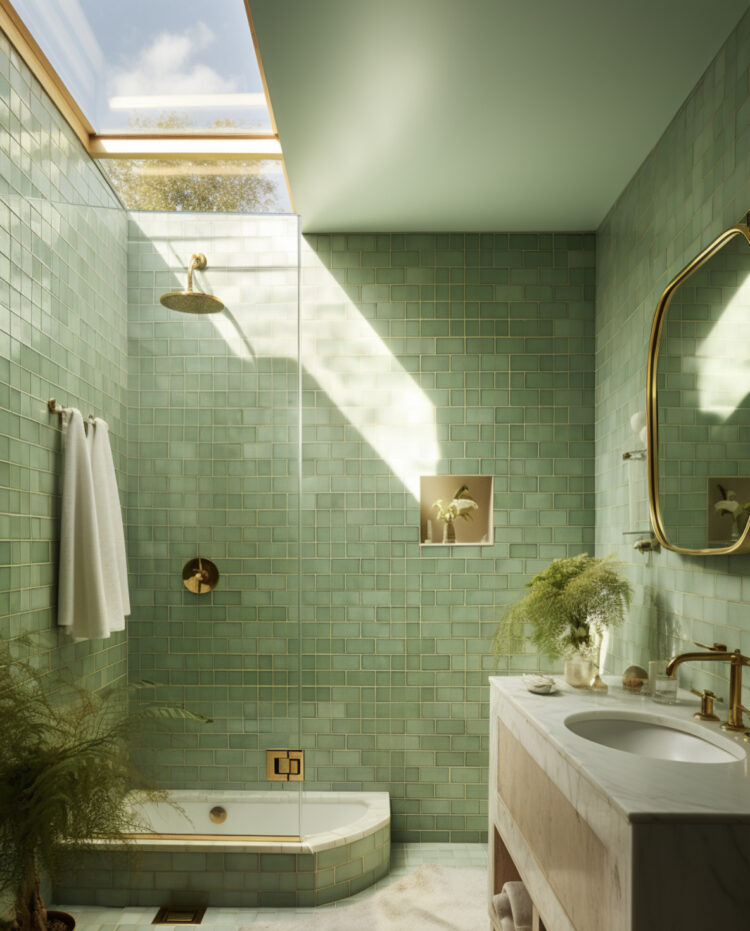
Of course if you want AI to be useful rather than simply beautiful the key is to see if you can ask it to light a north-facing room on a drizzly day in November. I suspect the tech isn’t quite there yet but that’s when it might be most useful in helping you decide if you want a dark colour in a room or not.
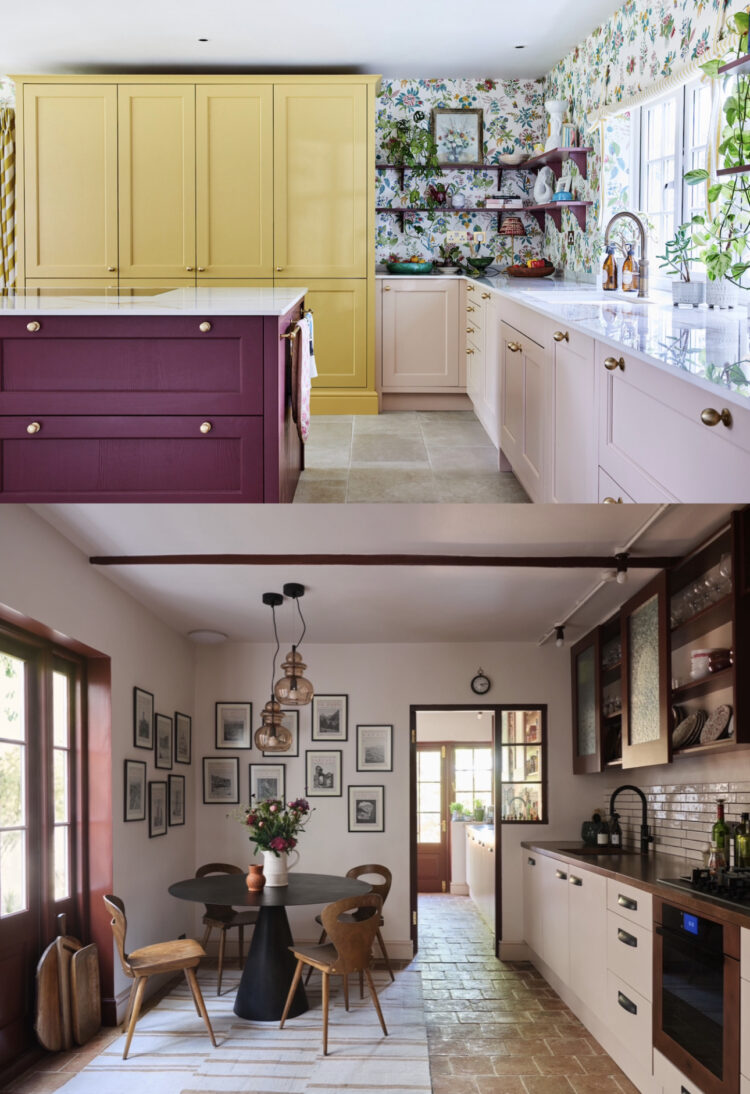
We also interviewed Vanessa Edwards, of @practically.fabulous, a teacher who is working towards an interior design qualification and who has never worked without AI. She uses it to put together room palettes and explore the use of colour. We interviewed her for a special bonus episode for our insiders – you can sign up to listen here.
Her view is that it’s a vital tool to help you visualise spaces. However, the tech is still in its infancy. Look closely and you might see a five-legged chair or a light that doesn’t fit. Personally I quite like that as it helps you understand it’s for ideas rather than unattainable reality.
We asked Vanessa to take a few images of Sophie’s house and a few of mine and put them together to see what our interior design baby might look like. As many of you know, my style leans towards a more saturated tonal palette while Sophie likes lots of colour and pattern. You can see the results here. I’m fascinated to know what you think. As soon as I saw them I thought they looked more Sophie but with my muted colours. She, on the other hand, emailed at the same time to say she thought they were definitely more me than her.
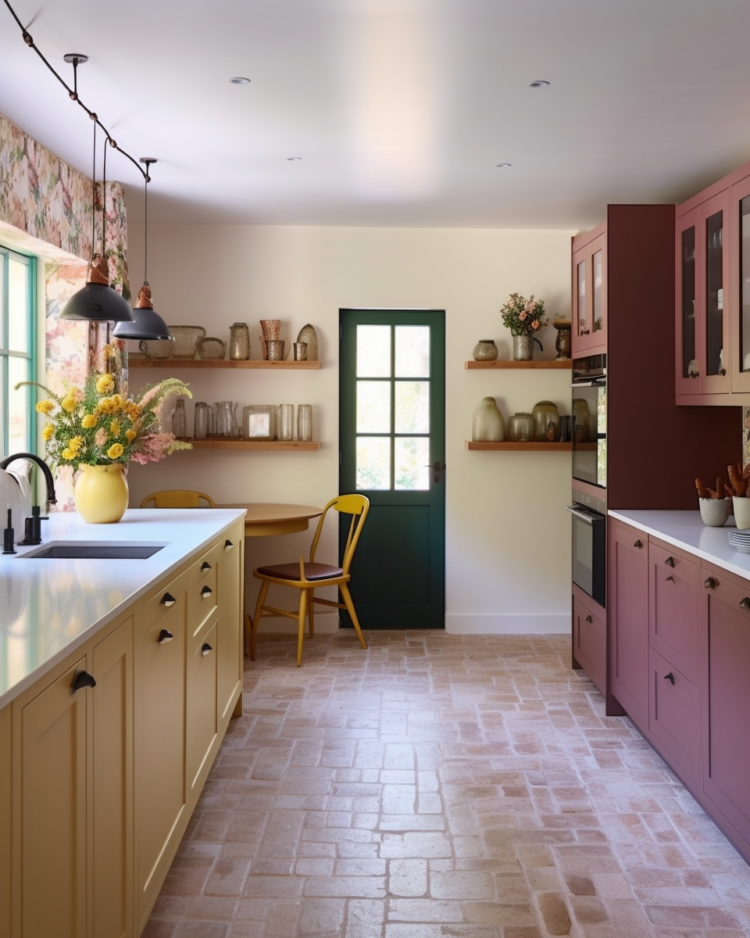
While we did this for fun and to illustrate a point I too have felt the con. I’ve looked at an incredible kitchen and thought “hey that’s amazing but who has windows like that?”.
When we posted on instagram there were lots of positive comments about how it could provide inspiration for those who sit between our two styles. And for showing someone who finds it hard to visualise what you are aiming for in your designs.
So where does that leave us? Juan says the technology is improving all the time and it’s best to get on board. It is, he says, a tsunami and you need to get a surfboard or be swept away. Below is the image by Mel Boyden that sparked my curiosity. She has some incredible AI designs on her feed but be warned – you might start buying lottery tickets or planning to install new windows.
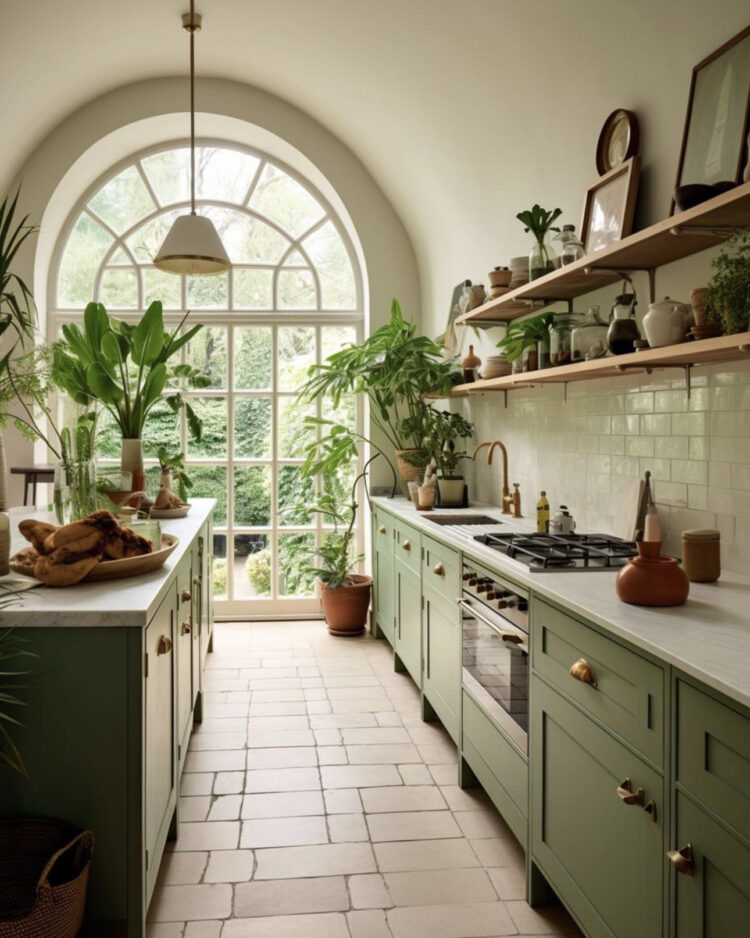
I think, having digested the podcast and done some more reading that, at the moment, it can be a really good way to help you visualise the colours you like and the style that suits you. It makes a great starting point to be able to show a designer where to start.
However, the last word must go to the human designers at Angel O’Donnell designs. I interviewed Ed O’Donnell for my last book and in a recent post he said of the images below: “Not bad for three minutes work. That’s the power of Midjourney. A few prompts .. and hey presto we have seven interior designs.”
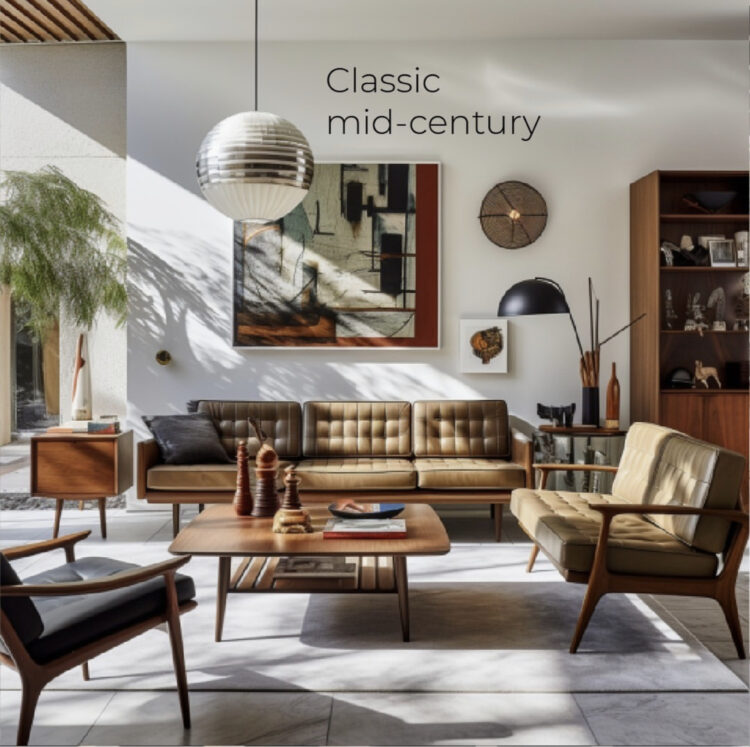
But perhaps the next sentence is the key: “Or approximations of interior designs. Are they they most inspired? No, but we didn’t spent any time refining the results. Will this replace the role of flesh-and-bone interior designers? Never say never, but for now we need not palpitate as dreamt-up images are moons away from creating a real-life scheme.
“This isn’t a tool for working out the precise functionality, materiality and style of a piece of joinery. Or detailing exact finishings for kitchens, bathrooms, wall coverings, window treatments and other furnishings. Or procuring, storing and delivering items in time for install. Or orchestrating a hundred trade people on site. Or problem solving under immense pressure.”
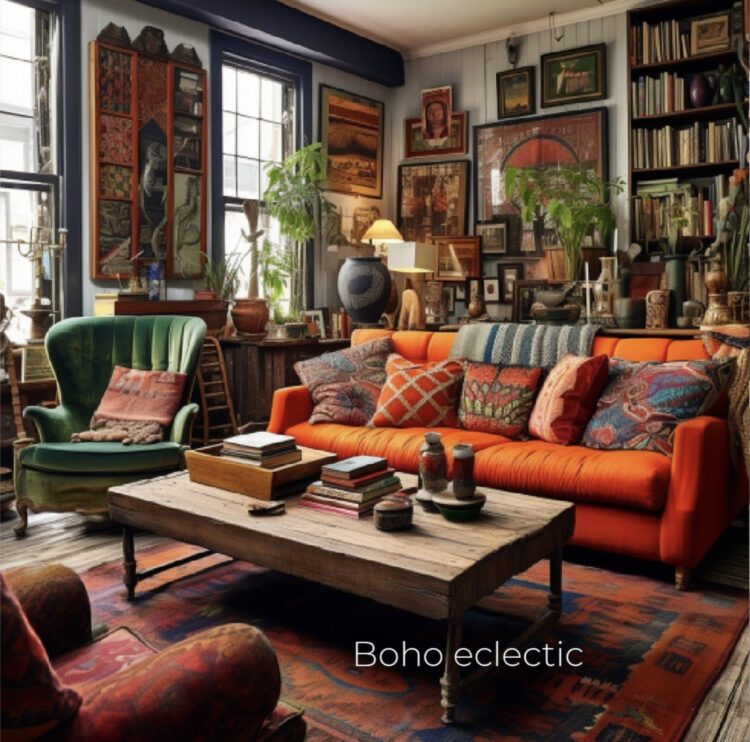
He adds that AI won’t help you if items are out of stock, or the client changes their mind. Nor will it rejig your budget.
But, and here’s the key. It doesn’t have to do any of that. “AI tools like Midjourney are a fast-acting starter for ten. A creative un-blocker. A mind-freer. A beautiful new way to develop moodboards and let one’s imagination take flight. And, as it’s clearly here to stay, we should all get on board.”
What do you think? I have been resistant although I hear the call to adapt to new technology. I also have a client who is very unsighted on her colour palette and who changes her mind quite often. I wonder if this could help?
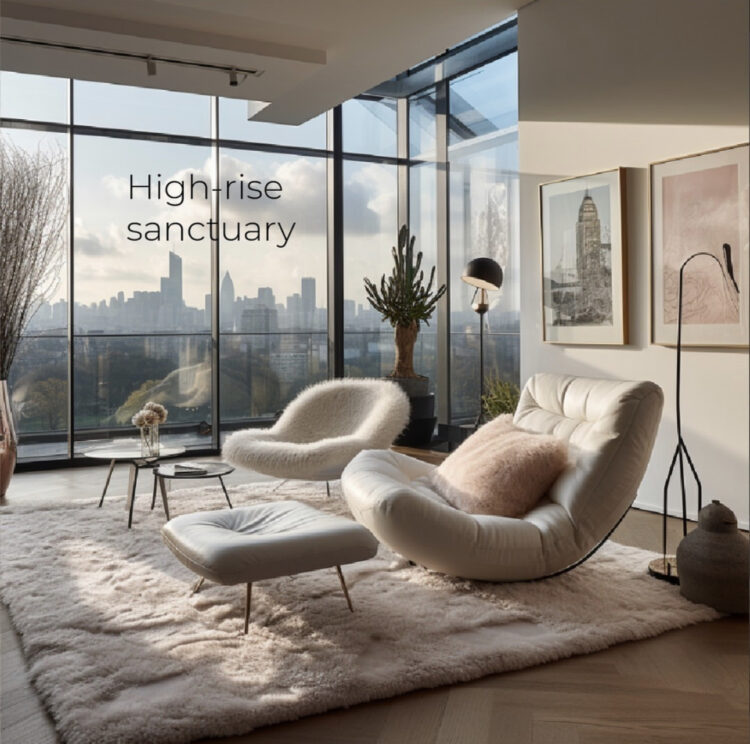
What do you think? Interesting but ultimately pointless? A useful tool that is a shortcut to what you want? A con trick? I’d love to know. I have to declare that I haven’t tried myself yet as I’m not sure I want to sign up to a paid subscription but I’m certainly looking more closely at the designs I see every day.






AI has the potential to revolutionize the industry by making interior design more accessible, affordable, and efficient.
This is my dream house.
I think none of the AI images are as interesting as Sophie and your original designs; it’s an averaging out that results in a perfectly pleasant but ultimately dull design. There’s no disruptor element to keep it interesting.
Such an incredibly interesting & very thorough article. Plenty of food for thought !
Love the mash-up of SophieKate styling !! You should set up a store selling this looks!
Thinking back to (a few decades ago), when KLC taught us room design by means of ripping piccies out of magazines & sticking them in a jotter; replaced by CAD CD’s (oh, the joys of ‘drag & drop’ furniture !) swiftly replaced by 3D ‘walkthroughs’;, and now AI.
AI is just a modern-day version of the jotter!
Progress ? Most certainly helpful, at the very least.
But nothing, nothing is as much fun, or beats gathering a massive pile of samples & a mood board & a real life walk-through of an actual room/property which is about to be reconfigured /renovated /designed.
This is one of your best articles this year…you’ve got us thinking !!! Thank you !
Using AI to design means leaving all the joy out of it, as far as I can see. While I can see the point of various tools that let you envision a particular color or pattern in a space, I would never outsource beyond that–if I care about design, and I do, then I WANT to do it myself. I also absolutely loathe the AI interiors shot that have begun to glut instagram. For me, interior design is art of discovering the possibilities in real spaces, with real objects, and real limitations. It’s like the joy in seeing a movie shot in a real space, with practical effects, versus CGI cartoony stuff that doesn’t ever convince. No thanks from me.
Interesting topic and as said AI can only be used as a moodboard. It can’t became a creative as an interior designer
A writer friend has just had his book cloned without his consent. It’s being used to help develop AI in the area he writes about – i.e. architecture. It’s utterly wrong. I also support designers being open about their use of AI in their work (good luck with that) and in certain fields like medicine it could be really useful so never say never but it is such a complex field and requires control/legislation not a free for all.
It’ll be interesting to see how the tools can be used to create genuinely new ideas, rather than only referencing existing or past looks or products. Henry Ford, talking about the importance of innovation at the start of the 20thC, said about his cars “if I’d have asked people what they wanted, they’d have only told me ‘faster horses'”. Typing in ‘mid-century modern’ and ‘boho chandelier’ won’t get us much further than we are now. Hopefully the computer power behind AI will allow the creatives to really blossom; then it’ll be the manufacturers under pressure to keep pace with their/our imaginations!
I can’t see too much wrong with it as long as it’s made clear it’s an AI design. Designers have used CAD tools for visualization for a very long time and those tools are getting increasingly sophisticated. It’s really just another means of showing us things we dream of but probably can’t financially attain. Surely it’s the individual’s responsibility to take a dream and source affordable equivalents to turn the dream into reality. Isn’t that the fun in making a home?
Thanks Kate for this really useful and comprehensive article, good to see lots of AI examples. I think it’s good as a visualisation tool, but can never replace the legwork of actual project management and people skills required! As for telling the difference between real photos & AI & computer aided drawings, well, photos are always crisp and clear. You only have to zoom in to see there’s something fake about these images!!
It’s a fascinating topic and your podcast episode covers the mixture of curiosity and concern that is floating around. Thank you for sharing your thoughts and sparking this conversation.
What I would find intensely helpful is AI that can come up with the “design” actually utilising available-to-buy items. Many of us don’t have the budget to retain an interior designer for our homes (or to find someone who is simpatico with our taste/objectives). This kind of real-world AI would make interior design (to steal the phrase), accessible to the masses – the masses who will never use a live designer themselves.
In terms of the “mind-melds” of Sophie’s style and yours, I thought that they were great, particularly the kitchen. I am at Kate’s end of the style spectrum, but not bold or confident enough with colour. I find the degree of pattern and colour that Sophie uses utterly overwhelming. The blend of the kitchen styles inspired me to consider pattern, but struck the inspirational (albeit somewhat obvious), note to simply exercise real control on placement/ percentage of the scheme.
Ooh, ooh, Miss! Just spotted the “rug island” in the amalgamated sitting room image. Someone give that AI a smart smack on the back of the legs.
Haha me too!
I think AI could be a very useful tool for conceptual design. As the article said, it would be an easy and fast way to generate multiple roomscapes to try and narrow down the tastes and preferred colour schemes of prospective clients. With respect to representing a fantasy, I don’t see much difference between a room designed by AI and a mocked up computerised render done by an architect or designer.
Great read thank you…signs in to Midjourney to have a play!
Hmm, very interesting topic, as you say a very useful tool but also a con trick in the wrong hands that could mean unemployment for the masses (see the Hollywood Writers strike as proof of the fear). Another good reason to try and persuade my children to learn a skill that will provide enjoyable long term employment that hopefully can’t be done in the future by a robot or a computer.
DEBS…I couldn’t agree more. Absolutely.